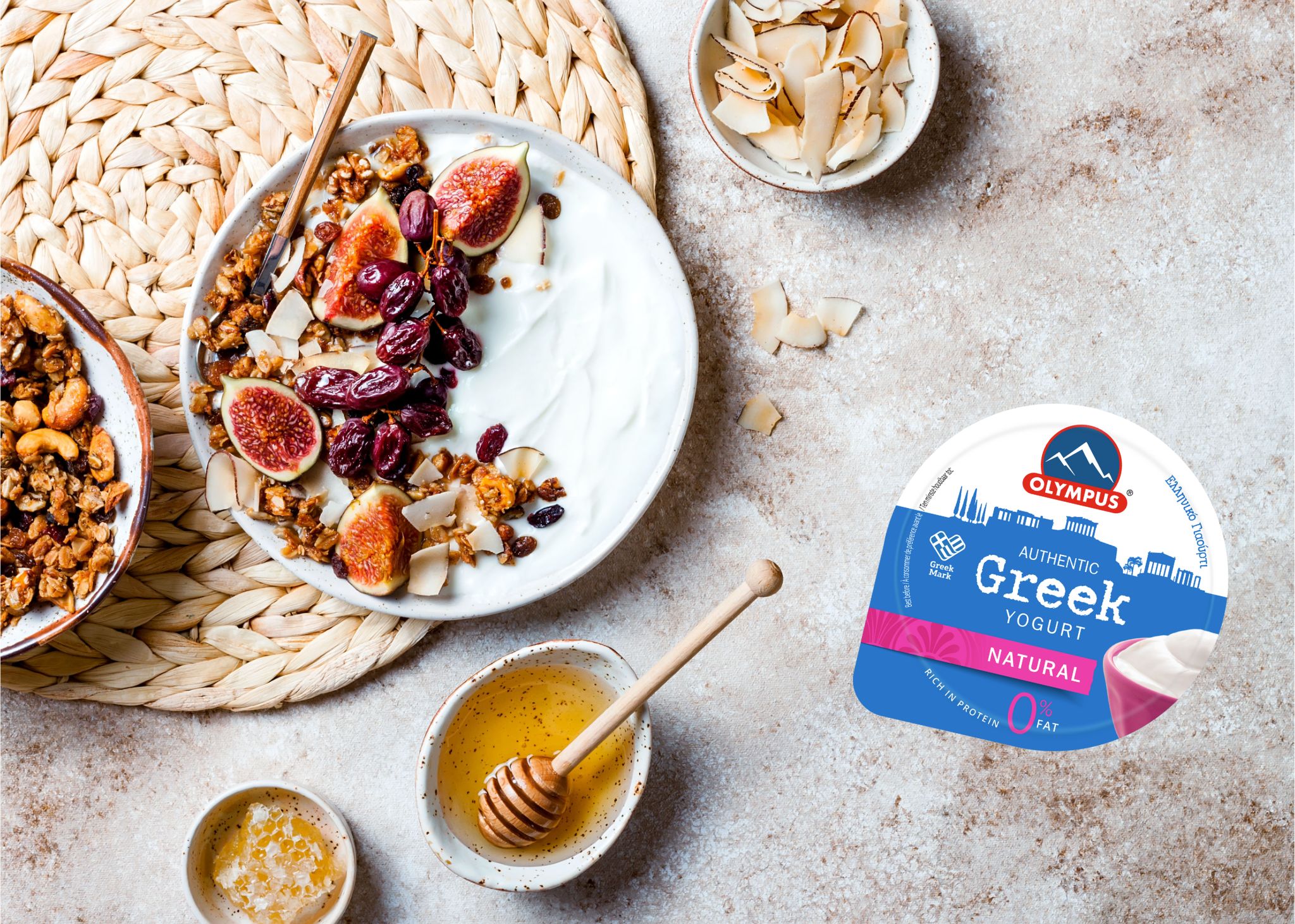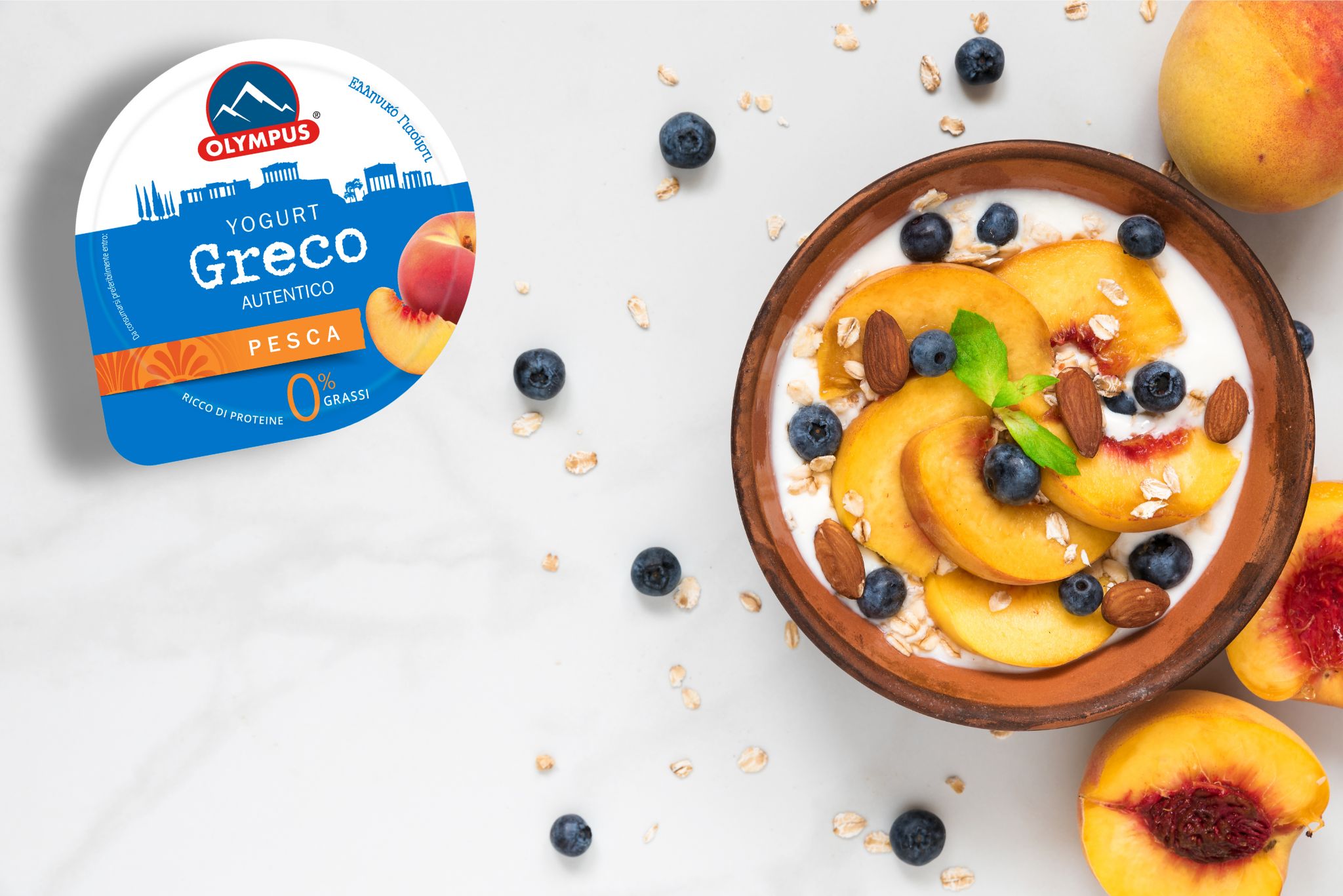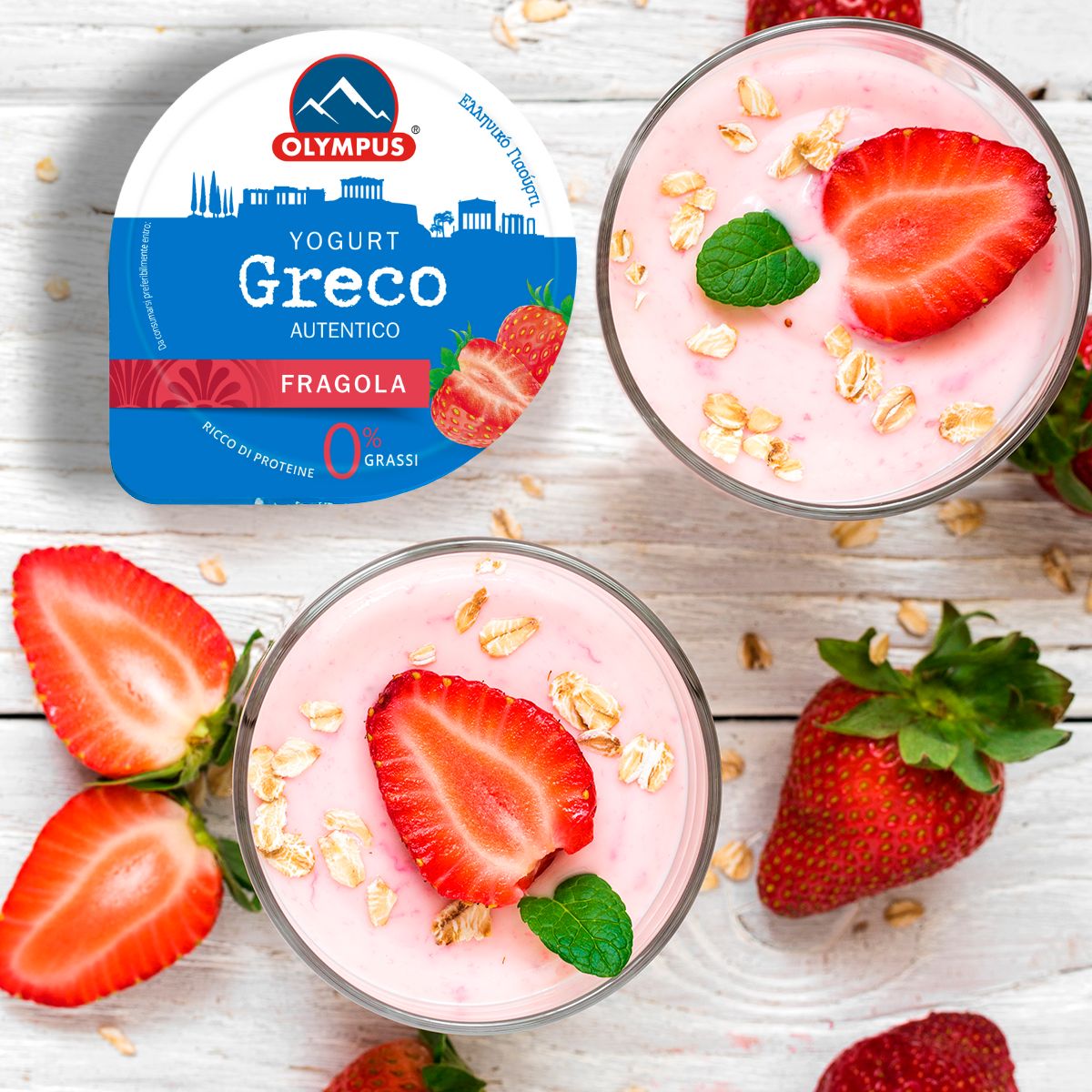Greek yoghurt with its thick texture and distinctive taste has transcended borders, conquering millions of palates around the world.
In the 19th century, this dairy product began to spread around the world. In 1980 it was introduced to Western markets and in 1990 it arrived in the United States under the name of Greek yoghurt.
What is Greek yoghurt?
Greek yoghurt is a variant of conventional yoghurt that has undergone a filtration process to remove all the whey from the milk. This process results in a thick, creamy dairy product with a high concentration of nutrients.
The traditional Greek yoghurt recipe is made from 100% naturally grazed cow’s or goat’s milk. This provides a silky texture with a slightly more acidic taste than conventional yoghurt.

Types of Greek yoghurt
Over the years, Greek yoghurt has become more widespread and has acquired variants. This diversity of products makes this dairy product so versatile and appetising, with each variety of yoghurt offering a unique experience to the palate.
- Plain Greek yoghurt. This is the most common dairy product. It has no additives or added flavours. Thanks to its versatility, it is used in many sweet and savoury dishes.

- Yoghurt with fruit. This option incorporates pieces of fresh fruit or compotes that add a distinctive flavour to Greek yoghurt. This dairy product is normally consumed as a dessert and not as an accompaniment to dishes.
- With honey and nuts. It is more gourmet than the previous types. This dairy product combines the creaminess of Greek yoghurt with the sweetness of honey and the crunchy texture of nuts.
- Whole, semi-skimmed and skimmed yoghurt. Whole yoghurt contains 10% fat, while semi-skimmed yoghurt has 5% and skimmed yoghurt 0.5%, making it the healthiest.
- With sheep’s milk. In this case, as its name suggests, it is made with sheep’s milk. This gives it a stronger flavour and a creamy texture, rich in fats, protein and calcium.
- With goat’s milk. This yoghurt made from goat’s milk has a number of benefits and characteristics different from traditional yoghurt. It contains less dairy, so it is easier to digest and is rich in fat, calcium, phosphorus and protein.

Difference with normal yoghurt
The main difference between Greek yoghurt and conventional yoghurt lies in its production process, texture and nutrients. While both dairy products are made from cow’s milk and natural cultures, Greek yoghurt undergoes an additional filtration process to remove the whey.
This gives it a thicker, creamier consistency. In addition, due to the filtration process, a part of the lactose is removed, thus concentrating other nutrients that increase the protein content. This makes it a more digestible product for some lactose intolerant people.
Health benefits
As well as being a delight for the palate, it is a healthy product full of nutritional benefits for health. Some of the advantages they provide are:
High protein content
It provides essential proteins for the development and repair of muscle tissue. Greek yoghurt is a highly recommended food for people who want to increase their protein intake. It is therefore included in diets to increase muscle mass.
Low lactose content
Thanks to the filtering process used to make yoghurt, a large part of the lactose is eliminated. Therefore, it is one of the tolerable foods for people who are intolerant to this sugar.

Rich in probiotics for digestive health
It contains probiotics that are beneficial for the proper functioning of the digestive system. These microorganisms help to balance the intestinal flora by improving digestion, stimulating the digestive system and strengthening the immune system to prevent disease.
Source of calcium and minerals
This type of yoghurt is a source of calcium and minerals essential for bone health. Its benefits strengthen bones and prevent diseases such as osteoporosis. In addition, calcium benefits the nervous and muscular system.
Where to introduce Greek yoghurt?
The versatility offered by Greek yoghurt is suitable for numerous culinary uses, bringing new flavours to the palate. This creamy product can be used in different ways in the kitchen, both in savoury and sweet dishes:
- Dressings and sauces. Greek yoghurt can be used as a healthy dressing or sauce for salads, meats, etc. By mixing it with the right ingredients, different delicious and nutritious options can be created. It goes perfectly with meats. An example of this type of dish is chicken curry, with a variant in which yoghurt is applied to the curry to create creaminess.
- Milkshakes and smoothies. Adding this dairy product to milkshakes or smoothies creates a creamy, healthy texture with a high protein level. When added to fruit, it makes a highly nutritious smoothie.
- As a dessert. This yoghurt can be used in desserts such as mousses or ice cream, replacing cream, for example. This gives the dessert creaminess and a high nutritional value without sacrificing flavour.
Premium Greek yoghurt
To taste the original flavour of Greek yoghurt, at Codina Foods, as distributors of the Horeca channel, we have the OLYMPUS brand from Greece, which is considered a leading brand of yoghurts and vegetable drinks. These are made from 100% Greek products of excellent quality to satisfy the needs of all palates.
It is a family business that is very active in international markets, distributing its renowned premium products in more than 47 countries around the world. It offers high quality, healthy food with the best raw materials. Thanks to their experience, they have managed to produce different variants of Greek yoghurt. From fruit flavours such as strawberry, cherry, peach or coconut, among others.


